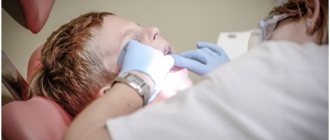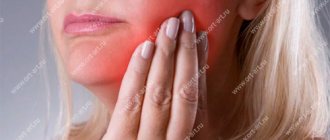The tongue is truly an amazing organ. Based on his condition, we can talk about human health. It contains lymphoid formations and nerves, blood vessels and glands. When pain occurs in the tongue, a wide variety of body functions begin to suffer. Among them are speech and touch, pushing and sucking, determining the temperature and taste of food.
Children often complain to their parents about pain in their tongue. The fact is that in a child the mucous membrane of this organ is quite thin and delicate. That is why many diseases are displayed on it. The presence of pathologies in the body is indicated by irritation and small pimples on the tongue. What should parents do in such a situation? If a child has a sore tongue, then, of course, it is best to show it to a doctor. However, moms and dads cannot always do this right away. That is why they should have an idea of why the tongue hurts and the reasons for this condition. Parents also need to know what to do to relieve their baby from discomfort.
Language functions
In order to find out why pain in this muscle organ may occur, it is necessary to understand its purpose. So, the functions of the language are as follows:
- Protective. The tongue prevents the penetration of germs and viruses through the mucous membrane.
- Sensitive. This organ is responsible for the sensitivity of tactile, thermal, pain and taste sensations.
- Plastic. The tongue helps to quickly restore cells and the upper layer of skin in case of mechanical damage.
- Suction. With the help of this organ, various substances enter the human body.
Language is a universal mechanism. It has a direct impact on the functioning of our body. That is why he needs to constantly pay attention and regularly care for him using hygiene procedures.
From the point of view of anatomical structure, the tongue is a muscle, on top of which there are many nerve endings, glands, fibers, papillae and taste buds. This organ has a direct connection with the gastrointestinal tract and affects its functioning. Our voice timbre also depends on the language.
This organ consists of two parts that do not have a clear boundary between each other. One of them is the back one. This is the root of the tongue, which on one of its sides fuses with the oral mucosa. The front part is the body. She is able to move freely in different directions. The upper surface of the tongue is called the dorsum.
This organ can be described as a litmus test, indicating the presence of diseases and malfunctions of various internal organs.
Symptoms of illnesses
When complaints arise from the baby, parents begin to look for an answer to the question “why does the child’s tongue hurt?” Various obvious and hidden reasons contribute to the appearance of unpleasant symptoms.
Young children experience discomfort in the oral cavity quite often. Unpleasant sensations appear suddenly, immediately affecting the baby’s general well-being. Children experience irritability and lethargy. They refuse to eat.
The way a baby’s tongue hurts can be characterized by three main symptoms. Among them:
- tingling;
- itching;
- burning.
Visually, pain manifests itself in the form of pimples, spots and blisters appearing on the organ of speech. This happens in 99% of all requests.
Pimples on tongue
Why does my child's tongue hurt? Sometimes the cause is pimples that appear on this organ. It is worth noting that classic acne cannot form on the human tongue. The fact is that there are no sebaceous glands in the mucous membrane of this organ. But they are precisely what are needed to form a typical pimple. Those formations on the tongue that have the shape of pimples can appear for two main reasons:
- As a result of active division and desquamation of cells located on the surface of the mucous membrane of the speech organ. This happens as a response to inflammatory processes occurring in the body. This phenomenon is accompanied by the appearance of whitish and red formations that resemble pimples. However, in fact, these are nothing more than papillae of the tongue that have increased in size.
- With dissection of the mucous membrane. This process occurs under the influence of the negative effects of viruses, bacteria and other damaging factors. This phenomenon leads to the accumulation of liquid in the form of small bubbles under the upper layer of the mucosa. Their filling will be transparent if infection has not occurred. The blisters will turn white if pathogenic bacteria have penetrated them. Sometimes the child’s tongue is red and hurts. This indicates that blood has entered the fluid. Sometimes the blisters on the tongue burst. In their place, painful ulcers form.
Causes of bubbles on a child’s tongue
In order to help the child as quickly as possible and prescribe appropriate treatment, it is necessary to determine the causes of the formation of bubbles on the child’s tongue. The very first reason why the mucous surface of a child’s tongue becomes covered with pimples is thrush. Often, this disease affects young children whose immunity is severely weakened. Small white bubbles form not only on the surface of the tongue, but throughout the entire oral cavity.
Treatment consists of frequent wiping of the mouth with a tetraborate solution, which contains glycerin. Sometimes doctors prescribe glycerin-based borax. All these drugs are easily available and are available even without a doctor's prescription. Therapy is carried out as follows. Take a piece of clean bandage and wrap it around your index finger, then moisten it generously in the liquid and gently wipe your tongue, and then your entire mouth. Try not to press on the tongue as this may trigger the baby's gag reflex. A similar treatment of the oral cavity should be carried out after each meal.
Viral stomatitis
Often a child’s tongue hurts, and at the same time pimples and ulcers appear on it and on the oral mucosa. As a rule, the cause of this phenomenon is stomatitis. In children, this disease most often has a viral or aphthous form.
In the first case, the child’s tongue hurts, and yellowish ulcers can be seen on it, as well as in the oral cavity. These formations are very small in size. But despite this, they cause pain in the form of severe itching and burning. Similar local features of stomatitis appear with other signs of infection. For example, symptoms of fever, conjunctivitis, intoxication, vomiting, diarrhea, skin rash and other discomfort are likely to appear.
With stomatitis, the child’s tongue hurts and the body temperature may rise. Pediatricians often observe enlarged lymph nodes and increased salivation in their young patients. These children have an unhealthy odor from their mouth. They eat poorly or refuse food altogether and sleep restlessly. Also, with stomatitis, the child’s tongue and throat hurt.
“Throat and stomach hurt,” or what do you know about adenovirus
During seasonal ARVI, cough and sore throat are an “expected” phenomenon. But what if traditional respiratory symptoms are combined with diarrhea or vomiting? Perhaps it is an adenoviral infection.
Special signs
Adenovirus, unlike many respiratory viruses, affects not only the respiratory tract, but also the mucous membrane of the small intestine. In addition, the conjunctiva of the eye comes under attack.
It leads to:
- copious mucous discharge from the nose,
- sore and sore throat,
- cough (first dry, and later with sputum),
- symptoms of conjunctivitis, such as redness of the eyes, watery eyes, a feeling of dryness and “sand” in the eyes,
- as well as abdominal pain, diarrhea, vomiting
- and fever, the duration of which can reach 2 weeks.
Moreover, if intestinal symptoms may not develop during the entire infection, then the “characteristic” eyes are an important distinguishing feature of the adenovirus.
Where can you get infected?
Adenovirus is extremely infectious and resistant in the external environment. And the source of infection can be sick people or household items on which the virus remains active for up to 8 days.
You can become infected:
- when the patient coughs and sneezes,
- consuming food prepared without sanitary standards (thorough hand washing is required),
- and even through contact with the feces of an infected person (for example, when changing a diaper for an infected child).
You can “catch” the virus even in a swimming pool if the water is not properly disinfected. And, obviously, this viral infection is not uncommon in children's groups.
How dangerous is this?
Adenovirus infection, in most cases, does not pose a threat to health or life. And it usually ends without consequences after 7-14 days. Whereas in weakened patients, the infection can drag on and reach 6 weeks.
This same category of patients most often develop complications in the form of:
- pneumonia,
- otitis,
- bronchospasm
- severe keratoconjunctivitis.
However, Rospotrebnazor experts note that complications of adenoviral infection are always associated with the addition of pathogenic bacterial flora (staphylococci, streptococci and others).
How to identify adenovirus
The classic symptoms of adenoviral infection, as a rule, do not require additional tests. And the help of laboratory diagnostic methods is mainly resorted to at the earliest stage of the infectious process or in case of doubt about the diagnosis.
The most informative analysis in this case is PCR diagnostics of the material (throat swab or feces) for adenovirus.
The study can be ordered separately or immediately in combination with other ARVI viruses (for example, “ARVI-Screen”), which will allow you to immediately carry out a differential diagnosis. True, the PCR technique sharply loses its reliability if treatment, both local (rinses, sprays) and general, has already begun.
A blood test for IgA antibodies to adenovirus does not have these shortcomings.
They appear in the blood during the initial period of the disease, and continue to circulate for some time after recovery.
However, children, as you know, “don’t like” blood tests, so this examination format is more suitable for adults.
Treatment of viral stomatitis
Pediatricians advise parents, in cases where they have the slightest suspicion of this pathology, to urgently show the baby to a doctor. And despite the fact that the treatment of viral stomatitis is simple, inaction by adults can aggravate the situation.
The pediatrician will examine the little patient, make a diagnosis and prescribe effective medications.
If viral stomatitis is the reason that a child’s tongue hurts, what should be done to relieve the child of discomfort? Strictly follow your doctor's recommendations. Parents should know that antibiotics are not prescribed for the treatment of this pathology. Pediatricians recommend vitamins and immunomodulatory drugs to young patients. And only in cases where stomatitis enters the relapse stage, a specialist can prescribe potent medications.
If this particular pathology causes a child’s tongue to hurt, what should parents do? They should give their child plenty of water. This will prevent dehydration. The fact is that with stomatitis very severe intoxication is often observed. And if the body continues to lose fluid, the baby will soon become lethargic.
Local methods are also used to treat stomatitis, one of which is rinsing. For this procedure, prepare a solution of potassium permanganate (pale pink) or an infusion of medicinal herbs such as sage and calendula. You can use decoctions of oak bark and chamomile. However, if a child’s tongue hurts at 2 years old, then it is very difficult to carry out similar procedures with him. For such children, doctors prescribe treatment of the mucous membranes with special sprays.
During the period of illness, the baby’s daily diet should include liquid or semi-liquid foods, various purees, cereals, as well as milk and yoghurts. Fish and meat are used only after grinding them in a meat grinder. In addition, if a child’s tongue hurts, then he should not be given cold, sour and hot drinks, chocolate and sweets, citrus fruits and solid foods.
Aphthous stomatitis
Why does my baby's tongue hurt? The cause may be aphthous stomatitis. Indeed, with this pathology, painful ulcers form on the tongue, as well as on the inside of the lips and cheeks. They are represented by a yellowish-white center, which is surrounded by an inflamed red stripe.
Pediatricians cannot pinpoint exactly what is the cause of this disease. As a rule, pathology develops due to such provoking factors as:
- allergies (drug, microbial and food);
- disruptions in the functioning of the immune system;
- chronic pathologies of the gastrointestinal tract;
- staphylococcal infection.
The main symptoms of aphthous stomatitis are:
- burning and itching on the mucous membrane;
- temperature increase;
- child's refusal to eat;
- the formation of a cloudy film on the surface of the ulcers.
What symptoms should you pay attention to?
In addition to pain, other symptoms may occur, many of which are a reason to urgently consult a doctor or call an ambulance.
1. Increase in temperature
. This symptom is characteristic of many intestinal infections, acute pancreatitis, stomach diseases, pyelonephritis and many other diseases. Remember, if the temperature does not subside for a long time even after taking antipyretics, you need to contact an ambulance service.
2. Nausea and vomiting
. Similar symptoms can accompany all of the above diseases. Do not delay calling a doctor if there is blood in the vomit or the vomiting does not stop.
3. Diarrhea
. Increased bowel movements can accompany intestinal infections, pancreatitis, gastritis and other diseases. If the stool is black or contains blood, you should immediately contact a specialist.
Less dangerous symptoms that accompany pain in the left hypochondrium are bloating, heaviness after eating food (especially fried, fatty, salty), severe rumbling in the stomach, and heartburn.
Treatment of aphthous stomatitis
Pediatricians point out to parents that the correct therapy for a child can be prescribed only after a comprehensive examination with the participation of a dentist, allergist and gastroenterologist. But in any case, local treatment will be needed.
What should be done when diagnosing aphthous stomatitis in a child?
To alleviate the suffering of a small patient, doctors can prescribe him the drug “Vinilin”. This remedy is also called Shostakovsky's balm. Pediatricians consider this drug to be an effective antiseptic that produces a regenerating and antimicrobial effect. The product contains a substance such as polyvinox. Its action is aimed at disinfecting the mucous membrane, excluding re-infection of damaged areas. At the same time, the drug “Vinilin” is able to eliminate pain and accelerate tissue regeneration. The balm is applied to the sores, having first applied it to a gauze napkin.
A strong antiseptic that has a remarkable anti-inflammatory effect is also a remedy such as Iodinol. It is mixed with water and used as a rinse.
For children older than one year, pediatricians may recommend Cholisal (gel). Along with the anti-inflammatory effect, this remedy also has an anesthetic effect. Apply the drug to the affected areas of the tongue, squeezing a small strip out of the tube and carefully distributing the gel on the mucous membrane.
In addition, for aphthous stomatitis, pediatricians prescribe drugs that increase local and general immunity, as well as vitamins.
Herpetic infection
If a child’s tongue hurts, the causes of this condition may lie in the occurrence of painful ulcers. They entail uncomfortable sensations. The main cause of the disease is the herpes virus, which begins to multiply when the immune system reacts to foreign organisms.
The pathology manifests itself sharply. The child's tongue begins to hurt and the temperature rises. The baby becomes excessively sleepy, and when examining the oral mucosa, multiple blisters and ulcers are noticeable. Most often, the tip of the child’s tongue hurts. The baby's saliva becomes more viscous.
In addition to the tongue, rashes affect the surface of the cheeks, lips, and sometimes also appear at the entrance to the pharynx. These bubbles are watery and very small. They are grouped on the reddened mucosa. Over a short period of time, the bubbles open. The affected areas are covered with a yellowish-gray film. After it peels off, painful ulcers appear.
Treatment of herpetic stomatitis
Pediatricians do not recommend parents to independently diagnose their baby’s condition. If they have symptoms of the disease, they should consult a doctor. Only he can make the correct diagnosis.
Antiviral drugs taken orally are used to treat herpes stomatitis. Acyclovir is a fairly effective remedy, according to pediatricians. It should be given to the child for a week 4-5 times a day, 200 mg. In particularly severe cases, this drug is prescribed for intravenous drip administration.
Such treatment should be accompanied by local treatment of ulcers. For this purpose, drugs such as Zovirax and Oxolin are used. You can also lubricate the sores with sea buckthorn oil applied to a cotton swab. To reduce the level of intoxication in the body, pediatricians recommend taking immunoglobulins in the form of “Viferon” and “Anaferon”.
Glossitis
This pathology is a lesion of the mucous membrane of the tongue. Most often, glossitis is a consequence of injury, a symptom of other diseases, or the result of the negative effect of pathogens.
The disease can occur in both acute and chronic forms. In the latter case, the phenomena of exacerbations and remissions constantly alternate.
Glossitis in children often goes unnoticed. The child does not complain to his parents about anything. The pathology is discovered accidentally during an examination of the oral cavity. In this regard, pediatricians recommend that parents periodically check the appearance of their child's tongue.
The causes of glossitis are:
- Mechanical injuries. A child may well damage the mucous membrane of the tongue with braces, special plates for correcting the bite, as well as the edges of the teeth or fillings.
- Bad habits. Children love to chew on pens, pencils, or bite their tongues.
- Burns of the oral cavity. They occur when eating too hot food or drinks.
With the desquamative form of glossitis on the tongue of children, parents discover strange spots that change their location and shape. With such glossitis, the child is only sometimes bothered by a feeling of burning and tingling. The causes of this pathology are gastrointestinal diseases, infectious diseases, endocrine disorders, anemia and allergies. The source of this form of glossitis is sometimes helminthic infestation.
One of the manifestations of inflammation of the mucous membrane of the tongue is rhomboid glossitis. In this case, children complain of roughness in the area of the back of the tongue, a burning sensation and pain. The cause of this type of glossitis has not yet been identified. This pathology is considered congenital.
Children sometimes experience catarrhal glossitis, which, as a rule, occurs in an acute form. This disease appears due to a bacterial infection that causes inflammation of the mucous membrane. In this case, the child’s tongue hurts on the side or on the back. Discomfort occurs when talking or eating. The tongue swells and turns red. Teeth imprints can be seen on its side surfaces. On the 2nd or 3rd day after the onset of the pathology, the tongue increases in size and becomes covered with plaque.
Pediatricians often note glossalgia in children. In this condition, the child’s tongue hurts, but no visible changes in this organ are observed. Children are bothered by a burning and tingling sensation that is either constant or occurs periodically. The child may also complain of dry mouth, which goes away after drinking a glass of water. Glossalgia is sometimes caused by diseases of the central nervous system, gastrointestinal tract, diabetes mellitus, and diseases of the hematopoietic organs.
Feeling hot
Menopause
Diabetes
25681 August 24
IMPORTANT!
The information in this section cannot be used for self-diagnosis and self-treatment.
In case of pain or other exacerbation of the disease, diagnostic tests should be prescribed only by the attending physician. To make a diagnosis and properly prescribe treatment, you should contact your doctor. The feeling of heat that a person experiences occurs due to a sharp expansion and blood filling of small subcutaneous vessels. This condition is called arterial hyperemia. At the same time, the skin turns red and becomes hot.
The lumen of blood vessels is regulated by the sympathetic and parasympathetic nervous system. Its changes depend on signals from the vasomotor (vasomotor) center of the central nervous system, hormones, pyrogenic (heat-causing) substances entering the blood, and a number of other factors.
Types of sensations of heat
The vessels are constantly influenced by factors that have a vasoconstrictor or vasodilator effect. For example, under stress, blood vessels narrow under the influence of the hormone adrenaline, and the skin turns pale. At the end of the stressful situation, the vessels relax and fill with blood.
Pathological arterial hyperemia, which is accompanied by a feeling of heat, develops either under the influence of irritants (infections, toxins, tissue breakdown products from burns, pyrogenic substances), or due to a violation of nervous regulation.
There are
neurogenic
arterial hyperemia (occurring in response to irritation of nerve endings) and
metabolic
(caused by the action of local chemical factors). An example of neurogenic arterial hyperemia is redness of the face and neck during hypertension, menopausal syndrome, and also during strong emotions.
Blood electrolytes have a metabolic effect on vascular tension: calcium and sodium constrict blood vessels and increase blood pressure, while potassium and magnesium, on the contrary, dilate them. Metabolic regulators include carbon dioxide, organic acids, and hormones.
Possible causes of feeling hot
Hot, hot and spicy foods can cause a rush of blood to the skin and a feeling of heat.
Alcohol has the same effect on the body.
, which promotes the dilation of blood vessels.
Taking certain medications
can also cause a feeling of heat spreading throughout the body. These include vasodilators, hormonal agents, antidepressants, etc.
The causes of arterial hyperemia and, as a result, feelings of heat can be different. If the regulation of vascular tone is disturbed, arterial hypertension may develop, accompanied by a sudden increase in blood pressure - a hypertensive crisis. The most common cause of this condition is hypertension. However, in a third of cases, arterial hypertension is caused by diseases of the internal organs: acute glomerulonephritis and other kidney damage, adrenal tumors and other diseases of the endocrine system. The magnitude of the rise in blood pressure during a hypertensive crisis depends on the age and individual characteristics of the person. At a young age, symptoms of a crisis may occur at a lower level of blood pressure, and at an older age – at a higher level.
A sharp increase in blood pressure is accompanied by headache, dizziness, nausea, vomiting, visual disturbances (“floaters”, double vision). Possible numbness of the limbs, a feeling of pins and needles, rapid heartbeat, shortness of breath.
Due to a violation of nervous regulation, chills occur, followed by fever, and increased sweating. The end of the crisis is accompanied by frequent urination.
Increased blood pressure and the symptoms accompanying this condition also occur with an adrenal tumor - pheochromocytoma
and other hormone-producing tumors. The tumor secretes large amounts of catecholamines (adrenaline and norepinephrine).
Clinical signs of pheochromocytoma may include headache, sweating, increased heart rate, irritability, weight loss, chest pain, nausea, vomiting, weakness, and fatigue. In some cases, patients may experience fever, shortness of breath, hot flashes, increased thirst, increased urination, dizziness, and tinnitus.
Many women complain of hot flashes during menopause
. Changes in hormonal levels occur even before the cessation of menstruation, during premenopause (menopausal transition). At first, its manifestations are insignificant, and most often they are not given importance or are attributed to the consequences of fatigue and mental stress. Hormonal and metabolic changes, in particular, a decrease in the level of estrogen, progesterone and an increase in the production of GnRH, are accompanied by hot flashes, which can be repeated several times a day.
Women describe them as a periodic short-term feeling of heat followed by chills, increased sweating, and rapid heartbeat.
In most cases, hot flashes only slightly affect your well-being.
Arterial hyperemia and a feeling of heat can be a sign of dysfunction of the thyroid gland, for example, with thyrotoxicosis
. Patients with thyrotoxicosis complain of general weakness, fatigue, irritability, sleep disturbance, sweating, trembling fingers, palpitations, and sometimes pain in the heart area.
Despite the increased appetite, patients with thyrotoxicosis lose weight.
Violation of thermoregulation, which occurs due to accelerated metabolism, leads to an increase in body temperature and causes a constant feeling of heat. The skin becomes warm and moist, the skin vessels dilate, which is accompanied by redness of the face. Sweating increases, nails become brittle, and hair falls out.
Sometimes hot flashes and a feeling of heat in combination with high blood pressure occur with diabetes mellitus
. These symptoms are accompanied by general malaise, sweating, thirst, and an increase in the volume of urine produced.
Which doctors should I contact?
If symptoms such as fever and hot flashes appear regularly, you need to contact, who, based on the complaints and tests, will refer you to or.
Diagnostics and examinations
The appearance of periodic hot flashes, accompanied by a feeling of heat, sweating, and redness of the facial skin, requires mandatory diagnosis.
The doctor evaluates the patient's complaints, taking into account age, gender and concomitant diseases. When blood pressure increases, turning into crises, it is necessary to determine the nature of the pathology - primary (associated with a violation of nervous regulation) or secondary (due to diseases of the internal organs). For this purpose, a clinical blood test and a general urine test, a urine test according to Nechiporenko, a blood test for glucose, cholesterol, and creatinine are prescribed.
Treatment of glossitis
Elimination of the disease should be carried out in a comprehensive manner and strictly on the recommendation of a doctor.
If there are no complaints from the child, special treatment will not be required. If there is pain, use:
- sanitation of the oral cavity, for which they use decoctions of medicinal herbs (sage, chamomile), antiseptic solutions, special rinses and elixirs;
- citral solution (1%);
- applications of anesthesin mixed with an oil solution of vitamin E;
- sea buckthorn and rosehip oil;
- solcoseryl dental paste;
- analgesics;
- anti-inflammatory nonsteroids;
- medicines that help strengthen the walls of blood vessels;
- antiallergic and antihistamine drugs;
- vitamin therapy;
- phonophoresis (physiotherapy with analgesics).
Which doctor should I contact?
Professional oral hygiene is an integral part of dental health. To do this, you need to visit a hygienist regularly. It will remove plaque, hard deposits, and prevent caries. Diagnosis and treatment of oral diseases is carried out by general practitioners - pediatricians, therapists, dentists. When the need arises, the child is examined by gastroenterologists, infectious disease specialists, and neurologists.
During diagnosis, urine and blood tests are taken, and bacterial cultures of deposits from mucous tissues are carried out. Sometimes other tests are recommended. For pain and discomfort, the doctor prescribes painkillers and special baths. To avoid tissue irritation, coarse, hot, and salty foods are removed from the diet. Your child should not be given spicy foods. It is important to promptly treat diseased units and constantly maintain oral health.
Vitamin deficiency and allergies
Such conditions also cause pain in the tongue. Vitamin deficiency most often occurs in the spring, when the child’s body is especially weakened. The cause of its manifestation is considered to be a severe lack of vitamins of one group or another. If a child has pain in the tip of the tongue or other parts of it, and red and white pimples appear on them, then this may well be a manifestation of vitamin deficiency. In addition to inflammation of the organ of speech, this pathology manifests itself in the formation of small cracks on the lips, peeling of the skin in the corners of the mouth, conjunctivitis, and the appearance of dandruff. If there is a lack of vitamin P in the body, in addition to blisters and pimples on the tongue, the child is bothered by loose stools. A lack of ascorbic acid is reflected in the appearance of white formations, bleeding gums, swelling, and the presence of hemorrhages on the skin.
If for this reason the child’s tongue tip hurts, what should parents do? Getting rid of a child from this condition is carried out by replenishing the lack of vitamins. This will eliminate the symptoms of the emerging pathology.
Often a child’s tongue hurts due to allergic stomatitis. It can be caused by citrus and red vegetables (carrots, beets and tomatoes), cocoa, chocolate, exotic fruits (papaya, passion fruit, mango), as well as strawberries and raspberries. When a food allergy occurs, red blisters and spots appear on the tongue, as well as on the oral mucosa. White pimples are observed at the tip of the speech organ. To eliminate discomfort and pain, you will need to remove allergenic foods from the child’s diet.
Causes depending on the location of pain
Pediatric dentistry in St. Petersburg will understand every problem, find out the causes of the disease, and prescribe therapy. Provoking factors include:
- Organ damage in chronic and acute form. This could be inflammation or the negative effects of medications.
- Fungal and infectious diseases of internal organs, vitamin deficiency, dysbacteriosis.
- Poor hygiene, alcohol consumption, smoking.
- Glossitis is inflammation of the outer layers of the mucous membrane. The disease occurs due to impaired blood circulation in the capillaries. It is provoked by a burn, cut, or injury. The disease goes away quickly, as saliva disinfects the wounds.
- Streptococci, staphylococci, viruses act pathogenically.
Main forms of pathological processes:
- Galvanic stomatitis;
- Geographical language;
The first disease develops against the background of staples, braces, and occlusion. A white coating and spots with pimples appear. If the form of the disease is severe, burning, erosion, irritation, and tooth marks on the lateral planes occur.
Geographic tongue is a disease of mucous tissue of a dystrophic and inflammatory nature. Desquamations appear on the surface of the organ, that is, areas with scaly peeling. In such areas the epithelium becomes red. They are surrounded by a rim of white epithelium, which peels off. The disease appears against the background of improper tissue nutrition, gastrointestinal diseases, and during the eruption of incisors, fangs, and molars.
The tip of the tongue hurts
The tip of the muscular organ is rich in taste buds and nerve plexuses. The ducts of the salivary anterior glands exit into this area. Every component can be damaged. If the tip of the tongue hurts, you can assume:
- Damage from trauma;
- Negative influence of physical factors;
- Allergies;
- Development of inflammatory processes;
- Glossalgia;
A child can be injured by hasty eating or inept use of cutlery. An accidental bite may cause bleeding. Damage is caused by salty, spicy foods, low and high temperatures. In such cases, children complain of pain and numbness. With reduced immunity, inflammation often develops. The aphthous form of stomatitis, which is caused by pathogenic agents, is often diagnosed. The disease manifests itself as deep ulcers, at the bottom of which plaque with a white tint accumulates. They heal slowly. Children's temperature rises and they feel unwell.
Viral pathogens cause herpes disease. The mucous membranes of the oral cavity are covered with colorless bubbles. After opening, ulcers form in their place and bleed. The baby may develop a fever.
The frenulum under the tongue hurts
If your child has pain in the frenulum under the tongue, you need to see a doctor to find out the cause of the problem. The main provoking factors are:
- Initial period of stomatitis;
- Incorrectly chosen mouthwash, brush or paste;
- An hysterical cry the day before, active singing;
- Microtraumas;
- Inflammation that appears as a result of an allergic reaction or enlarged lymph nodes;
- Caries, an infection of the gum tissue;
Problems arise due to a short frenulum. Insufficient ligament length can be corrected with conservative therapy or trimming. Specific gymnastics helps recovery: rolling a muscle organ into a ball, folding it into a tube. Exercises help stretch the ligament. Surgery is performed at any age, preferably in preschool. It is optimal to operate the ligament in infancy, since newborn children easily tolerate such manipulations.
Pain at the base of the tongue
Inflammation of the gums in a child is an unpleasant disease. The baby becomes capricious, whiny, his temperature may rise, and his appetite disappears. The sooner the parents show the little one to the doctor, the easier and faster the therapy will be. Children often complain of pain in the root area of the speech organ. This can happen when:
- The area of the base of the tongue is injured: wounds, injections, cuts. Children often suffer from foreign objects entering the oral cavity. If the injuries are serious, they are treated in a hospital.
- A viral or bacterial infection enters the body. The surface of the tongue becomes covered with ulcers and blisters. They interfere with swallowing food and speech. The pathology covers the tonsils, pharynx, and larynx.
- The salivary glands become clogged, which interferes with the swallowing process.
- Medicines are used uncontrollably.
- Neuralgia, allergies, anemia develop, and hormonal disorders appear.
Chronic diseases can be associated with failure to comply with hygiene rules. In any case, parents need to show the child to a doctor for medical care.











